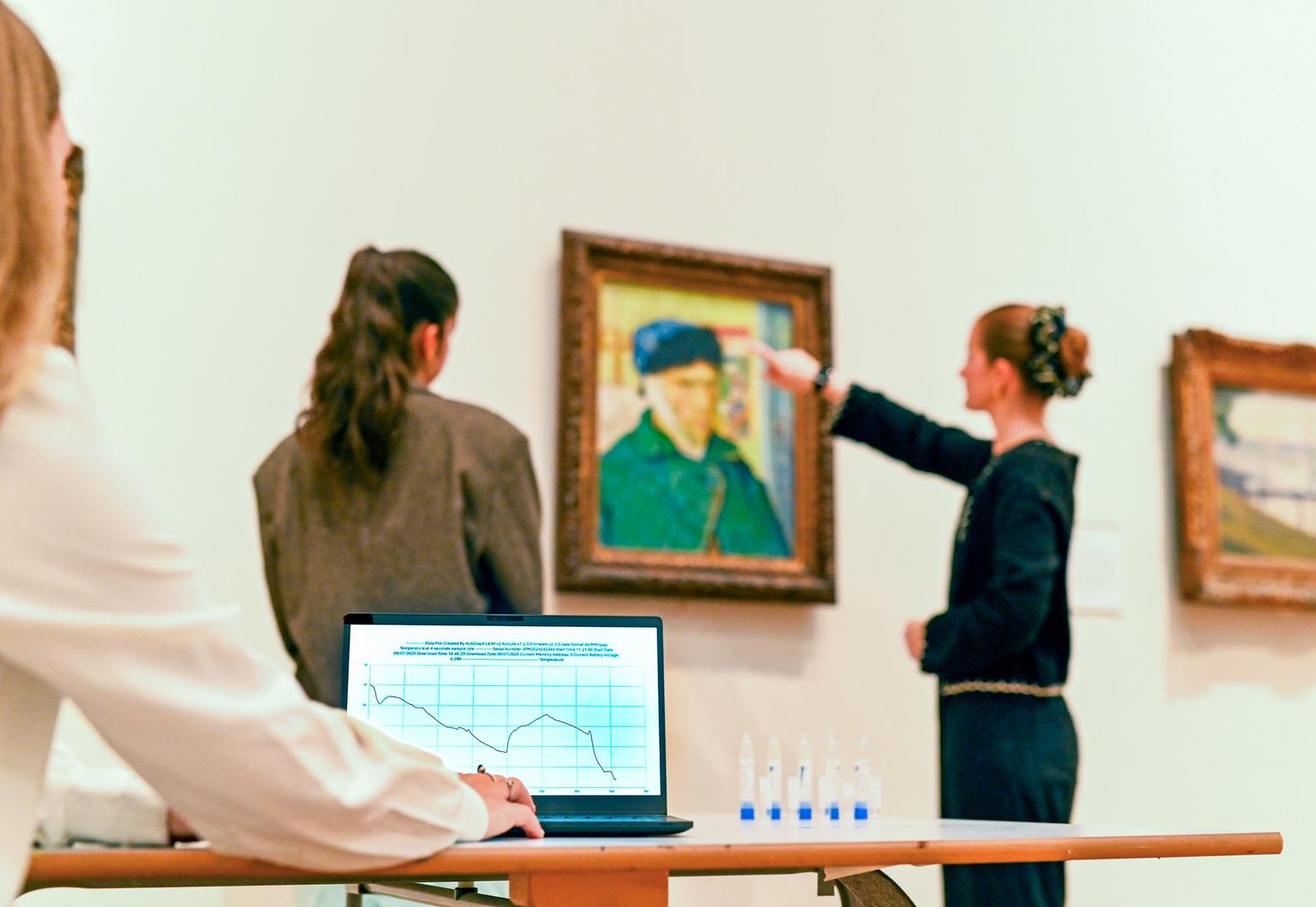First-of-its-kind study proves positive impact of art on the body

A first-of-its-kind study launched by Art Fund’s National Art Pass provides the most compelling scientific evidence to date that viewing art has immediate, measurable benefits for our health and wellbeing.
Undertaken by King’s College London and co-funded by Art Fund, the UK’s national charity for museums and galleries, and the Psychiatry Research Trust, the study measured the physiological responses of participants while viewing masterpieces by world-renowned artists including Manet, Van Gogh and Gauguin in a gallery.
The research found that art activates the immune, endocrine (hormone), and autonomic nervous systems all at once – something never previously recorded. Art Fund hopes the findings will encourage more people to visit their local museums and galleries to experience these proven health benefits firsthand, with free and discounted entry through the National Art Pass.
The most exciting outtake is that art had a positive impact on three different body systems... at the same time
Dr Tony Woods, researcher at Kings College London, said: “The research clearly shows the stress-reducing properties of viewing original art and its ability to simultaneously excite, engage and arouse us.
"From a scientific perspective, the most exciting outtake is that art had a positive impact on three different body systems – the immune, endocrine and autonomic systems – at the same time. This is a unique finding and something we were genuinely surprised to see."
The study involved 50 volunteers aged 18-40, who either viewed original artworks at The Courtauld Gallery in London or reproductions of the same paintings in a matched, non-gallery environment. It took place between July and September 2025. Participants were monitored for heart rate variability and skin temperature using research-grade digital watches to track levels of interest and arousal. Their cytokines and cortisol levels were also measured through saliva samples, providing a clear indication of stress levels.
Cortisol levels – the key stress hormone – fell by an average of 22% in the gallery group, compared to just 8% for the reproduction group. Those viewing original art also had more dynamic heart activity – indicating that art engages the body through both emotional arousal and stress regulation.
Pro-inflammatory cytokines (IL-6 and TNF-α) – which are linked to stress and a number of chronic diseases – dropped by 30% and 28% respectively for those viewing original art, with no change observed in the reproduction group. This suggests art has a potential calming effect on the body’s inflammatory responses.
Expanding on why this helps to demonstrate art is good for us, Dr Woods said: “Stress hormones and inflammatory markers like cortisol, IL-6 and TNF-alpha are linked to a wide range of health problems, from heart disease and diabetes to anxiety and depression. The fact that viewing original art lowered these markers suggests that cultural experiences may play a real role in protecting both mind and body.”
As well as appearing less stressed, participants also showed physiological signs of excitement whilst viewing art, including dips in skin temperature (-0.74C) and more variation in heartbeat patterns, as well as higher overall heart rates – indicating bursts of emotional arousal.
These findings suggest that art can arouse, deeply relax and reduce stress levels at the same time when viewed in a gallery – which experts say is effectively a “cultural workout for the body”.
Dr Woods added: “In short, our unique and original study provides compelling evidence that viewing art in a gallery is ‘good for you’ and helps to further our understanding of its fundamental benefits. In essence, Art doesn’t just move us emotionally – it calms the body too.”
The research also revealed that neither personality traits nor emotional intelligence influenced responses, suggesting the broad health benefits of art on the body are universal.
While previous studies have linked regular gallery visits to long-term wellbeing, this is the first to capture real-time physiological benefits whilst viewing art, demonstrating its immediate benefits.
This study proves for the first time what we've long felt at Art Fund – that art really is good for you
Art Fund’s National Art Pass encourages as many people as possible in the UK to experience the benefits highlighted in this study with free or discounted entry to hundreds of museums, galleries and historic houses across the UK.
Art Fund's director, Jenny Waldman, said: “This study proves for the first time what we've long felt at Art Fund – that art really is good for you. What’s particularly exciting is that the findings show these benefits are universal – they can be experienced by anyone. We want to encourage everyone to make time to visit their local museum or gallery and experience these powerful effects for themselves. With a National Art Pass, you can enjoy free or discounted entry to hundreds of inspiring places across the UK – and discover just how good art can make you feel.”
The study represents a successful co-funding collaboration between Art Fund and the mental health charity, the Psychiatry Research Trust.
The Chair of the Psychiatry Research Trust, Professor Carmine Pariante, said: “We are delighted to have worked so collaboratively with the Art Fund. The Trust funds research and education in mental health and this type of interdisciplinary research, relevant to both science and wellbeing, is exactly the type of studies that are needed to understand how arts influences both mind and body.”

Download the research
The Physiological Impact of Viewing Original Artworks vs. Reprints: A Comparative Study (2025) was undertaken by King’s College London and co-funded by Art Fund and the Psychiatry Research Trust. The research, which hasn't yet been peer reviewed, can be downloaded below.